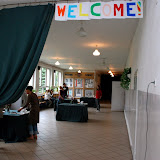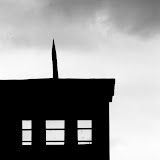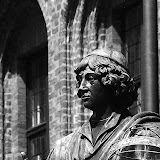Saturday, 19 September 2009
Let's talk;)
Sunday, 21 June 2009
Results from cinema's inquire
 Penélope Cruz: She is the first Spanish actress to win the Oscar. She has also starred in several American films such as Blow, Vanilla Sky, and Vicky Cristina Barcelona
She speaks four languages: Spanish, Italian, French and English
Penélope Cruz: She is the first Spanish actress to win the Oscar. She has also starred in several American films such as Blow, Vanilla Sky, and Vicky Cristina Barcelona
She speaks four languages: Spanish, Italian, French and English
Pedro Almodóvar: He is a Spanish film director, screenwriter and producer. Some of his most important films are Labyrinth of Passions (1982), All About My Mother (1999), Broken Embraces... He won 6 Goya ( 2 for the best director, 3 for the best film and one for the most original script) and 2 Oscars ( one for the most original script and the other for the best film where English doesn’t appear) along his career.
 El Orfanato: It is an horror film from 2007 made by Juan Antonio Bayona ( this guy studied in our school).
El Orfanato: It is an horror film from 2007 made by Juan Antonio Bayona ( this guy studied in our school).

Tuesday, 16 June 2009
That week that we spent with You was wonderful time for us. Thank You for coming here, for having a barbecue together, for bowling, for sightseeing, for spending time with us, for studying with us and for many, many other things that cannot be said with any words. We had together moments that will last in our memories for ever and even one day longer. We hope that You won’t forget about us too and one time in the future we will meet each other again. We also hope that our friendship will last long, long in the future. We miss You very, very much.
Hugs and kisses
- The Polish

Monday, 15 June 2009
Young people in summer in Catalunya
·Holidays:
Summer holidays are the most important period of the year. During summer, people go to the beach, the swimming pool or simply relax on the sofa with a soft drink. In Catalunya, on June 19th, we finish school and, finally, we can enjoy the sun. But when people fail some subjects, they need to re-sit the subjet with an exam. Normally, this exam is the next week after finishing the lessons.
·The beach:
Normally, in Catalunya, the swimming pool is full and ,consequently, we decide to go to the beach because… IT’S FREE!! In our beaches there’re a lot of different people:·Surfers: They come to the beach to practise surfing and windsurfing, but in Barcelona, there aren’t good waves and ,consequently, there aren’t a lot of surfers.
·Nudists: Nudists have got their own beach, because some people don’t like to see the naked bodies of the people.
·Grandparents: They are the oldest people in the beach. They like to getting a suntan (women), and men like to staying in the beach under the beach umbrella and playing cards, domino or chess with their friends.
·Young people: The like chatting with other people and playing badminton or football, they’re a little bit loud, but are good people.
·Barcelona:
Barcelona is full of tourists in summer, the beach and the swimmingpool specially. In summer, it is a very beautiful city because there are a lot of people, it’s sunny, but sometimes it is very stressful. Normally, young people go away from the city, but some people decide to stay in the city on holidays.·Summer camps:
In Catalunya, some young people go to summer camps. In this sites, people do different activities, like games, excursions,etc… There are different types of camps: English camps, Sports camps… These activities last for two months aproximately, and boys and girls about 12-17 years old participate in it.·Boy scouts:
Boy scouts are a group of young people. They do different excurions along the year but the most important is in summer. This excursion is about two weeks and normally is in a lake or in a site with water. In this sort of club, people meet other people and it’s fun, you can go to sites and make friends .To sum up, summer is a good season for everyone: kids, young people, grand parents…
Friday, 12 June 2009
Traffic jam in rainy Poland
Monday, 8 June 2009
Survey about travelling
Sunday, 7 June 2009
Thursday, 28 May 2009
Monday, 18 May 2009
Sunday, 17 May 2009
TORUN




 TEUTONIC KNIGHTS
TEUTONIC KNIGHTSThursday, 14 May 2009
Wednesday, 13 May 2009
Posters up to 20 meters ...

It's free, you only need the software and about 5-10 minutes (without taking into account printing and placing it on the wall).
Steps to follow:
1. Download the program or use the web aplication
http://homokaasu.org/rasterbator/) .Note that the web version has more restrictions and the size and resolution will be lower.2. Run Rasterbator and select the image
3. Select the paper size and alignment (A4, A3 etc) (horizontal or vertical).
4. Set the output size: (see the poster of the photo).
5. Set the desired options in “rasterbation”: color and resolution
6. Select the output directory and press' Rasterbate!
7. Finished: Print it and place it on the wall.

Ronyasoft offers ProPoster a non-free software to make posters at home.
Steps to follow:
1.Download program at
http://www.ronyasoft.com or http://www.ronyasoft.com/products/proposter/files/proposter.zip2. Pay to use the program and register it.
3.Select image and size.
4. Print the images.

Block posters is a free website
pplication, here you can upload your photo and print it like a giant poster.Steps to follow:
1. Upload your photo in the webpage.
2. Modify the image
3. Print the images.
Only 3 steps!
With Poster 8 you can make super banners, signs, certificates…
Steps to follow:
1-Download the software at
www.postersw.com2-Purchase it and register Poster 8.
3-Only 60 seconds to make your image.
4-Print and hang on the wall.
In my opinion, the best choice is Rasterbator because it has many options and editing tools and it’s free.
Thursday, 7 May 2009
"Treball de síntesi" of 2nd ESO
On the 25th, 26th, 27th March, students of second ESO went on a trip to do their treball de sintesi in Delta de l’Ebre. The Delta is an area by the coast in the south of Catalonia.
We met in Andreu Nin street at 8.00 a.m.
We arrived to the camp house at 11.30 a.m. Then, the monitors talked about the rules and the evolution of the river Delta.
At 15.00 p.m. we went to Tortosa. We visited the cathedral and the castle of La Suda.
We returned to the camp house, we completed the dossier activities.
At night, we had night activities and we went to slept.
On the 26th we went cycling near the Ebre river. We did 15 km in 3 hours. After that, we ate in a cottatge. Later, we had the “perxa” activity.
The perxa is a boat for a 7 people.
The perxa is more difficult than the canoe, because the paddle is heavier.
A few people fell to the water.
We returned to the camp house, we ate dinner and went to the disco.
At the disco we had a great time!
In the morning, before the excursion, the last day, we prepared our bags and we got ready for canoeing.
Canoeing is a very fun activity.
The canoe consists of an paddle with two spades; one spade in horizontal and the other is vertical.
We could go alone or in groups of 2 and 3 persons.
The individualy activity is easier than the grupal activity because when we are two or three people, everybody has to be coordinated because if you don’t we could fall.
After the activity we returned to school and our families came to pick us.
We all were very tired because this activity isn’t difficult but is tiring.
by: Sara,Laura,Sergio








